 When you’re feeling poorly, you might think that moving too much could increase the pain — but that’s simply not true! Exercise has been proven to be a key player in reducing chronic pain and discomfort. Part of a successful holistic pain management program, like The Hache Protocol for Pain Resolution™, emphasizes how even a brief session of movement every day could drastically reduce your pain.
When you’re feeling poorly, you might think that moving too much could increase the pain — but that’s simply not true! Exercise has been proven to be a key player in reducing chronic pain and discomfort. Part of a successful holistic pain management program, like The Hache Protocol for Pain Resolution™, emphasizes how even a brief session of movement every day could drastically reduce your pain.
Now, this is where to be careful so that you’re not overexerting your body and making the problems worse. Enter low-impact movement. Gentle exercises, like Yoga and Tai Chi, are perfect for loosening up stiff muscles and joints.
Remember, whenever you exercise, be kind to your joints – you don’t want to risk injury while trying to achieve pain relief! Persistence in low-impact exercise can have a wonderful effect on the body, also cultivating a mindset that helps you acknowledge and respect your body’s limits so that you can notice safe, gradual improvements that pave the way to a life with less pain.
In this week’s blog post, we’re delivering ideas for low-impact exercises that could drastically reduce your pain levels. By working even one of these activities into your daily routine, you’ll have made a choice that will make a pain-free life less of a distant dream and more of a reality.
Benefits of Low-Impact Exercises for Chronic Pain
It’s no secret that exercise is a cornerstone of holistic wellness, offering a myriad of benefits from improving circulation to easing discomfort from chronic pain. Exercising regularly doesn’t have to be a dreaded task. Gentle workouts have been proven to increase oxygen-rich blood flow seamlessly throughout your body, increasing your energy and rate of healing.
Low-impact exercise helps to produce endorphins, commonly known as nature’s painkillers, elevating your mood and alleviating discomfort without the intervention of drugs with nasty side effects. By practicing activities like yoga and tai chi, you’ll improve your flexibility, reduce stiffness, and gain more control over your mobility. This integrative approach to fitness and holistic healing improves your level of pain and nourishes your spirit as well, empowering you on your journey to living without discomfort.
To learn more about how fitness can improve your overall health, check out Dr. Rob Vangerben’s video here:
4 Low-Impact Exercises for Chronic Pain
Exercise of all varieties is a celebration of the amazing things your body is capable of. As we explore the following exercises, remember that introducing fitness into your life is all about finding what feels best for you. Let’s dive into a few activities that you could try out this week:
1. Swimming
 Swimming is an excellent full-body workout with minimal impact on the joints, perfect for patients suffering from arthritis or chronic pain. It’s a great way to introduce movement into your holistic health routine, as it offers the benefits of cardiovascular conditioning and muscle strengthening in an environment that’s meant to empower your well-being.
Swimming is an excellent full-body workout with minimal impact on the joints, perfect for patients suffering from arthritis or chronic pain. It’s a great way to introduce movement into your holistic health routine, as it offers the benefits of cardiovascular conditioning and muscle strengthening in an environment that’s meant to empower your well-being.
For those looking for a low-impact workout that’s fun to do, aqua aerobics is a great option. Many fitness centers offer aqua aerobics classes suitable for all fitness levels where you can join an engaging social environment that makes exercising more enjoyable. Aqua aerobics is easy on the joints and gets the blood pumping, bringing fresh oxygen to your cells and encouraging endorphin production.
2. Yoga
With roots in ancient India, yoga offers a harmonious blend of practices that integrate body and mind. Through a blend of physical postures and breathing techniques, yoga offers a harmonious blend of strength training and mindful practices that enhance flexibility. Recognized worldwide for its safety and effectiveness, yoga provides an outlet for you to thrive without the nagging discomfort of physical pain and mental unrest.
Follow the steps below to get into one of our favorite yoga postures, Downward-Facing Dog:

- Roll out your yoga mat (that’s okay if you don’t have one!) and start on your hands and knees, with your knees directly below your hips.
- Spread your fingers wide and press through your knuckles. With your feet hip-width apart, tuck your toes under so you’re ready to lift off the mat.
- Exhale and lift your knees off the mat, raising your hips towards the sky. At this point, your body should look like an upside-down V.
- Begin to straighten your legs with a micro bend in your knees. Don’t worry if you can’t straighten your legs very much. Try bending one knee at a time – we call this “walking the dog”!
- Keep your head between your arms, gazing toward your feet. Roll your shoulder blades down your back, away from your ears.
- Try to hold this posture for 5 to 10 deep breaths. Focus on evenly distributing your weight between each knuckle and the balls of your feet, elongating and taking pressure off your spine.
To exit the pose, gently lower your knees back to the mat. This posture is amazing for finding quick relief from muscular tension in the back. Holding this position in sequence with other yogic postures can help you cultivate a stronger mind-body connection.
To learn more about the mind-body connection, listen to our Podcast Episode #39: Breathwork, Tapping And Healing Holistically With Dr. Mansi Vira.
3. Tai Chi
 Like yoga, Tai Chi improves flexibility and strength, fostering a balanced sense of well-being. Tai Chi is an ancient Chinese martial art known for its slow, graceful movements and meditative foundation. This practice encompasses performing a sequence of intricate movements known as forms. Flowing through each form enhances physical health while promoting mental clarity and physical composure.
Like yoga, Tai Chi improves flexibility and strength, fostering a balanced sense of well-being. Tai Chi is an ancient Chinese martial art known for its slow, graceful movements and meditative foundation. This practice encompasses performing a sequence of intricate movements known as forms. Flowing through each form enhances physical health while promoting mental clarity and physical composure.
For patients interested in a holistic routine that combines fitness with mindfulness, Tai Chi is a safe and gentle activity that improves balance and tranquility, inviting physical and mental relief from stress.
4. Walking
 Whether you need a breath of fresh air or are searching for the perfect low-impact exercise to introduce to your holistic lifestyle, walking is a simple, yet effective activity with a tremendous list of benefits. Here are just a handful of the physical and mental benefits that regular walking can impart:
Whether you need a breath of fresh air or are searching for the perfect low-impact exercise to introduce to your holistic lifestyle, walking is a simple, yet effective activity with a tremendous list of benefits. Here are just a handful of the physical and mental benefits that regular walking can impart:
- Improved heart health and reduced risk of heart disease
- Strengthens leg muscles and improves bone density
- Reducing symptoms of depression and anxiety
- Boosts brain function and mental alertness
- Increases creativity and problem-solving
- Improves sleep quality
- Regulates blood pressure
- Promotes joint health
We could go on, but you get the idea. Taking a spin around the block or, better yet, going for walks in nature has been proven to positively impact physical and mental well-being.
For more ideas on exercising outdoors, check out our blog post: 5 Easy and Effective Exercises to Do Outside.
The Role of Mindset
While showing up and actively practicing fitness in whatever form you prefer, know that mindset plays a transformative role in managing pain. As we explored in the Pain Free For Life Mindset blog post, adopting a perspective of ownership, action, and consistency is key to any successful habit. Keeping a positive mindset goes beyond simply treating symptoms – it completes a well-rounded approach to a holistic lifestyle.
With the understanding that psychological and emotional factors deeply impact the perception of pain, mindset plays a transformative role in managing pain. By embracing a positive perspective, you’re empowered to make more informed decisions about fitness, nutrition, treatment options, and more! A journey towards well-being starts in the mind. Through arthritis, auto-immune conditions, chronic pain – you name it. We’re committed to helping you not only manage pain but thrive in your health. Each challenge you face, whether it’s holding a downward dog or swimming 3 laps in the pool, is an opportunity to fortify your own personal growth – and we’re here for you every step of the way.
The Hache Protocol Reset
We’ve helped thousands of people worldwide find a meaningful solution to their chronic pain without the need for drugs or surgery. The Hache Protocol Reset is a guided program to help you take control of your pain management. This 12-part series takes you step-by-step through comprehensive training videos covering key elements of a holistic lifestyle for pain management, including nutrition, sleep, and fitness.
This approach isn’t about extreme exercises that end up doing more harm than good but about integrating regular, low-impact activities that enhance your overall well-being. By improving circulation, boosting endorphin production, and enhancing flexibility, Video #8 of The Hache Protocol Reset empowers you to alleviate pain in a gentle way that meets your individual needs. Careful progression in your fitness level reduces the risk of injury while making it practical for you to get started, whether that means rolling out your yoga mat or joining a Tai Chi group in the park.
If you’re new to The Hache Protocol Reset or need a refresher on the fundamentals, check out the program here.
Keep Improving Gradually
At the heart of our approach to holistic health is a deep commitment to keep going! It’s not easy for everyone to start a fitness routine, and each exercise is going to look different for everyone. Every body is different, and for those with limited mobility or experiencing pain, start slow. When you integrate daily fitness into your routine, remember that it’s your routine, and it can look however works best for you.
That could mean beginning with exercises tailored to your abilities, like seated or supported movements, and gradually increasing duration and intensity. Try to prioritize exercises that enhance flexibility and strength without strain, and always listen to your body. If something doesn’t feel right, stop. Never push yourself beyond that line of comfortable resistance.
For more inspiration on habits to improve your well-being, check out our recent blog, 10 Holistic Daily Habits to Manage Chronic Pain Effectively.
Low-impact exercises offer a vital pathway to managing and reducing pain. By incorporating activities like yoga, tai chi, and gentle walking into your daily habits, you can significantly improve your circulation, enhance flexibility, and stimulate endorphin production which helps you to maintain an all-important perspective to help you keep moving forward.
The exercises we talked about today are particularly helpful for those with chronic pain or limited mobility. We encourage you to explore these gentle yet effective exercise options as you continue on your journey toward a more comfortable and active future.
Explore The Hache Protocol Reset and feel for yourself how it can resolve your pain naturally.
Sources cited:
https://www.ncbi.nlm.nih.gov/pmc/articles/PMC5461882/
https://extension.usu.edu/heart/research/exercise-and-chronic-pain
https://www.helpguide.org/articles/healthy-living/chair-exercises-and-limited-mobility-fitness.htm





